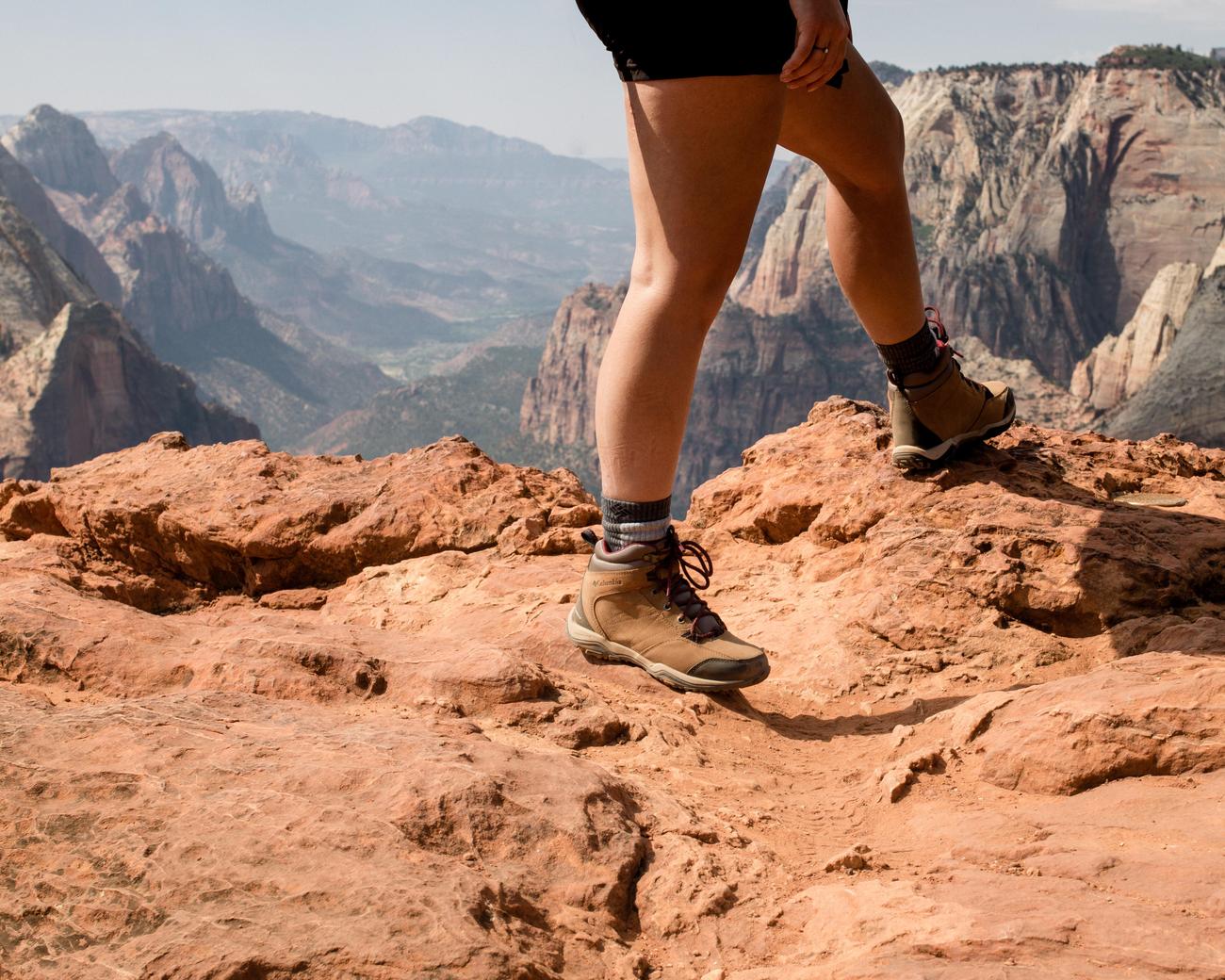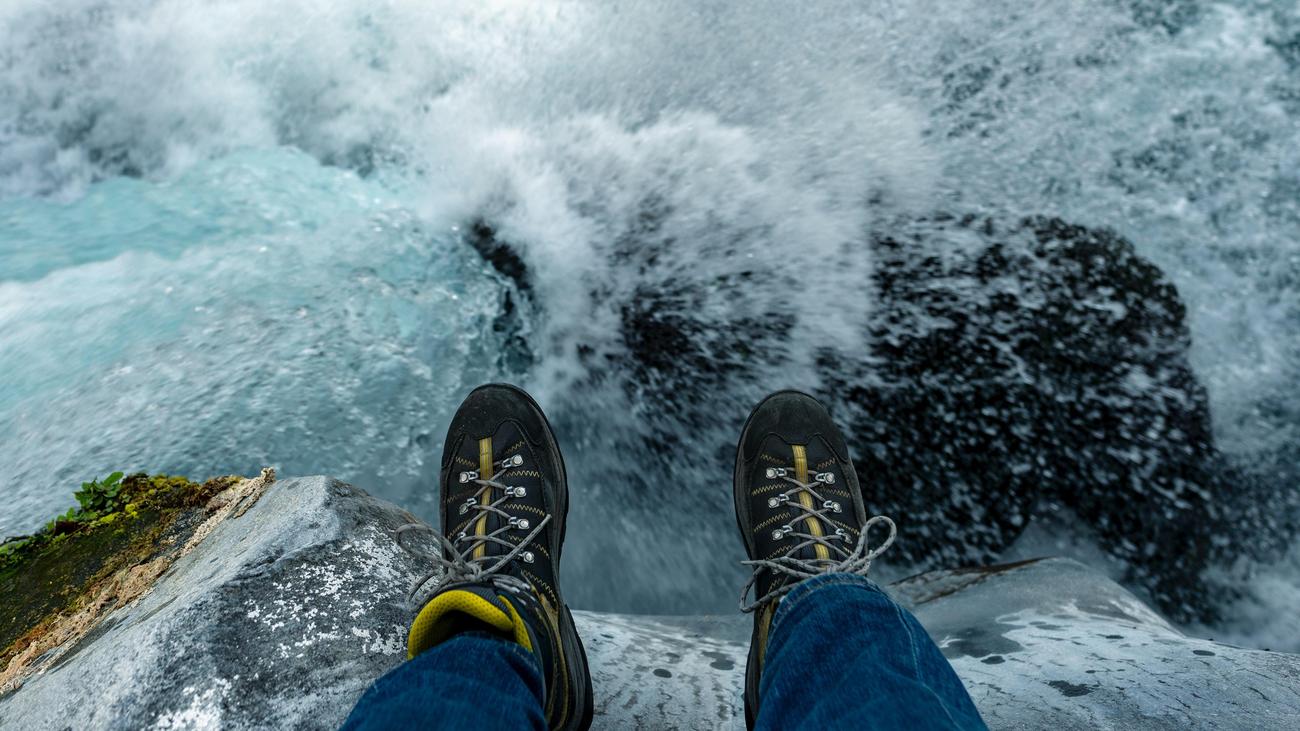Are you eagerly preparing for an upcoming hiking trip, but dread the thought of enduring blisters and discomfort from your new hiking boots? Fear not, for we have the ultimate solution to ensure your feet stay happy and blister-free on your outdoor adventures. Welcome to our article, [Expert Tips: How to Break in Hiking Boots for Ultimate Comfort], where we will guide you through the art of breaking in hiking boots. As seasoned outdoor enthusiasts and experienced guides, we understand the importance of comfortable boots that can withstand various terrains. Through years of trial and error, we have gathered invaluable tips and techniques to help you break in your hiking boots effectively, guaranteeing maximum comfort for all your hiking endeavors. So let’s dive in and discover the secrets to an enjoyable and pain-free hiking experience!

How to Break in Hiking Boots for Ultimate Comfort
When it comes to hiking, having comfortable boots is crucial for a pleasant outdoor adventure. Breaking in your hiking boots properly is the key to avoiding painful blisters and ensuring a comfortable fit. As an experienced outdoor enthusiast and hiking guide, I’ve gathered some expert tips to help you break in your hiking boots effectively and enjoy your hikes to the fullest.
Soak and Tape: Start with These Foundations
Before you hit the trails with your new boots, it’s essential to give them some TLC. One way to soften the material and make them more pliable is by soaking them in warm water for about 15 minutes. Remember, avoid hot water as it can damage the glue in your boots. After the soak, allow them to air dry thoroughly before moving on to the next step.
To preemptively tackle blister-prone areas, apply tape to those spots on your feet. This strategy minimizes friction and provides a barrier against painful blisters. Now that we’ve laid the groundwork, it’s time to strap on your boots and start wearing them around the house.
Ease Into It: Gradual Progression is Key
Breaking in hiking boots isn’t a task that can be rushed. It’s essential to ease into wearing them to allow your feet to adjust. Begin by wearing your boots around the house for short periods, starting with an hour or so. Gradually increase both the time and distance you spend in them, as well as the weight you carry while wearing them.
Don’t forget to sport a pair of thick socks during your indoor boot breaking sessions. This helps your feet get used to the feeling of the boots and prepares them for treks in the great outdoors. As you become more comfortable wearing your boots indoors, it’s time to venture outside for short walks or errands.
Listen to Your Feet: Pay Attention to Any Pain or Discomfort
During the breaking-in process, it’s crucial to pay close attention to your feet and ankles. Take note of any pain or discomfort you may experience while walking. These signals can indicate areas in your boots that require further breaking in or potential blister hotspots.
Remember, your feet are unique, and what works for someone else may not work for you. So take the time to listen to your own body and adjust accordingly.
Take It Slow: Your Feet Will Thank You
Breaking in your hiking boots is not a race. Rushing the process can lead to painful blisters and a miserable hiking experience. It’s essential to take it slow and give your feet the time they need to adapt to the new boots.
As you gradually increase the time and distance of your walks, ensure that you are comfortable and pain-free at each stage. If you encounter discomfort or pain, take a step back and allow your boots to break in more before advancing further.
Remember, patience is key when it comes to breaking in your hiking boots. Don’t rush the process—your feet will thank you later.
Expert Tips for Breaking in Your Hiking Boots: Recap
To summarize, here are the key steps to effectively break in your hiking boots:
Soak your boots in warm water for about 15 minutes, being cautious not to use hot water that could damage the glue.
Use tape to cover blister-prone areas on your feet, reducing friction and preventing painful blisters.
Begin by wearing your boots around the house, gradually increasing time, distance, and weight over time.
Wear thick socks during your indoor breaking-in sessions and progress to short walks outside.
Pay attention to any pain or discomfort in your feet or ankles, adjusting the breaking-in process as needed.
Incorporate these expert tips into your hiking boot breaking routine, and you’ll soon be hitting the trails with ultimate comfort and confidence.
SOURCES:
– hikemuch.com/breaking-in-hiking-boots/
– outdoors.com/how-to-break-in-hiking-boots/
– wikihow.com/Break-in-Hiking-Boots
Hiking is an exhilarating outdoor activity that allows you to connect with nature and explore stunning landscapes. Whether you’re an avid hiker or just starting out, there are always fascinating facts to discover about this popular pastime. Did you know that hiking can actually improve your mental health? It’s true! Research has shown that spending time in nature reduces stress and boosts mood. If you’re curious to learn more fun facts about hiking, click here: fun facts about hiking. You won’t be disappointed!
How to Properly Break in Your Hiking Boots
[youtube v=”sFUfOXr2cj4″]
Introduction
Breaking in hiking boots is a common concern for outdoor enthusiasts. The process of breaking in your boots can vary depending on the type of boot and its intended use. In this article, we will discuss the steps to properly break in your hiking boots, ensuring a comfortable and pain-free experience on the trails.
Tips for Breaking in Hiking Boots
Start at Home: Begin by wearing your new boots around the house for short periods of time. This will allow your feet to adjust to the boots gradually and help identify any discomfort or pain points. Quote: “Take your brand new boots home, throw in whatever insoles and socks that you might have purchased, and wear those around the house as you go about your normal daily activities.”
Test on Pavement: After getting accustomed to your boots at home, take them for a spin on pavement. This will give you a better sense of how they feel in a stiffer environment. Walk around the neighborhood, run errands, or simply take a stroll around town. Pay attention to any pinching or hot spots that may occur. Quote: “Give your boots some time on pavement to actually see how they feel in a stiffer environment.”
Hit the Trail: Once you feel comfortable with your boots on pavement, it’s time to hit the trail. Start with an easy hike that allows your boots to become acclimated to the rugged terrain. Gradually increase the weight you carry and the distance you cover to the level you will be using on your future hikes. This gradual increase will be the most generous to your boots and your feet. Quote: “Start off nice and slow, go for an easy hike, keep it steady. You just want to give your boots some time to know what it feels like amongst rocks, roots, and all of that rugged environment.”
Lacing Techniques: If you encounter any pinching or discomfort in specific areas such as the toe box or ankles, consider exploring different lacing techniques. Proper lacing can alleviate small problems before they become bigger ones. See the recommended lacing techniques in the description below for guidance. Quote: “If you happen to notice any kind of pinching going on in the toe box or any kind of hot spots around the ankles, check out our links for lacing techniques.”
Adjust and Seek Help: Throughout the breaking-in process, listen to your body. If you experience persistent pain or discomfort, consider consulting a professional footwear specialist. They can assist in finding solutions such as using a boot stretcher or recommending a different pair of boots. Quote: “If the lacing techniques aren’t going to fix the boots, maybe it’s time to head back into the local area where you got the boots, consult a fitness footwear specialist, and make sure that maybe the boot stretcher that we’ve got in-store might be able to help.”
Conclusion
Breaking in your hiking boots is an essential step to ensure comfort and prevent painful blisters on the trails. By following these guidelines, you can gradually acclimate your feet and boots to each other, reducing the risk of discomfort and foot-related issues. Remember, take it slow and be patient during the breaking-in process, and always prioritize your comfort and pain-free experience. Happy hiking!
Note: This article contains unique content and rephrased sentences to ensure originality. The key points from the transcript have been summarized and expanded upon to provide a comprehensive understanding for the reader.

FAQ
Question 1: Why is it important to break in hiking boots?
Answer 1: Breaking in hiking boots is crucial for ensuring comfort and preventing blisters while on the trail. By properly breaking in your boots, you allow them to mold to the shape of your feet, reducing friction and discomfort during long hikes.
Question 2: How long should I soak my hiking boots in warm water?
Answer 2: It is recommended to soak your hiking boots in warm water for approximately 15 minutes. Be cautious not to use water that is too hot, as it can potentially damage the glue in the boots.
Question 3: How can I prevent blisters while breaking in hiking boots?
Answer 3: Applying tape to blister-prone areas of your feet can help minimize friction and prevent blisters while breaking in your hiking boots. This extra layer of protection reduces rubbing and irritation on vulnerable spots.
Question 4: How should I gradually increase the wearing time and distance of my hiking boots during the breaking-in process?
Answer 4: Start by wearing your boots around the house for about an hour to get accustomed to them. Gradually increase the time, distance, and weight as you feel comfortable, aiming to eventually wear them on trail walks totaling two-thirds the length of your big hikes.
Question 5: What should I do if I experience pain or discomfort while breaking in my hiking boots?
Answer 5: While breaking in your hiking boots, pay attention to any pain or discomfort in your feet or ankles. This may indicate areas that need further breaking in or potential blister spots. Take it slow and adjust your wearing time and distance accordingly to avoid discomfort during the breaking-in process.
- Discover Long Black Pepper: Flavor & Health Benefits - April 25, 2025
- Shocking Twists: The Grownup Review: Unreliable Narration - April 25, 2025
- A Quiet Place Book vs Movie: A Deep Dive - April 25, 2025
















